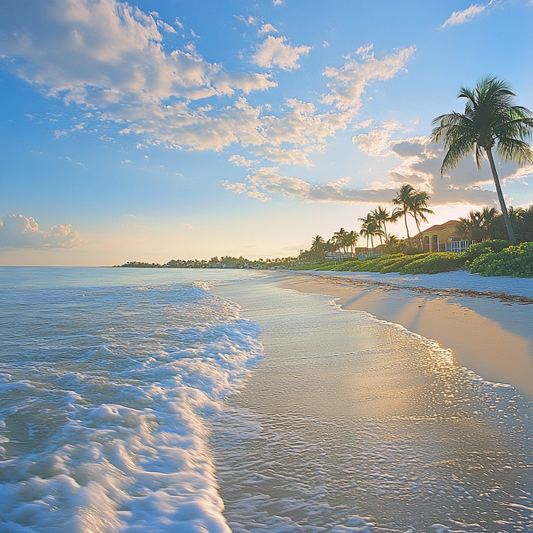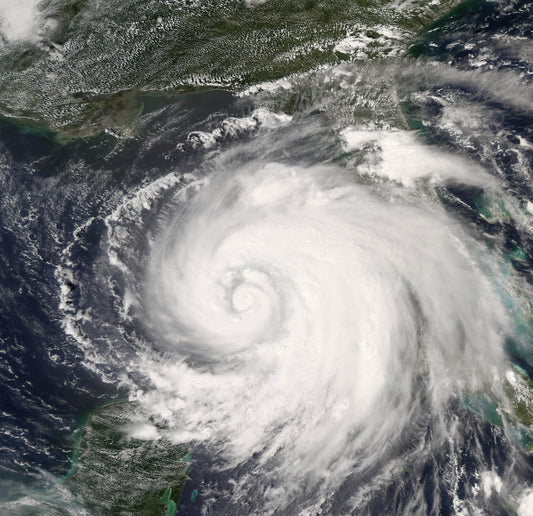Red tide is a recurring environmental issue that significantly impacts Florida's coastline, particularly in areas like Naples. This natural phenomenon, caused by the harmful algae Karenia brevis, can lead to massive fish kills, respiratory issues, and other health risks for both residents and visitors. Understanding the current red tide conditions, its effects on marine life and human health, and ways to mitigate exposure is essential for anyone living in or visiting Southwest Florida.
Recent reports indicate that red tide levels have surged in Collier County, with concentrations exceeding one million cells per liter in some areas. As a result, state health officials have issued advisories, warning of potential respiratory irritation and urging the public to take precautions. This blog post will explore the latest updates on red tide in Naples, its health effects, and measures to stay safe while enjoying Florida's beautiful coastline.
Current Red Tide Status in Naples
Affected Areas & Recent Reports
The Collier County Pollution Control section has reported high levels of red tide along Naples beaches and Marco Island. As of January 2025, red tide blooms have been confirmed offshore, with reports of respiratory irritation and fish kills in multiple locations.
The Florida Fish and Wildlife Conservation Commission (FWC) has detected extremely high concentrations of Karenia brevis, with levels exceeding 1 million cells per liter in parts of Lee and Collier counties. These levels indicate a severe bloom, prompting the Florida Department of Health (DOH) to issue multiple health advisories.
Key areas currently affected by red tide include:
-
Naples Beach
-
Marco Island
-
Wiggins Pass
-
Vanderbilt Beach
-
Barefoot Beach
Red tide blooms vary in severity and location depending on wind patterns and ocean currents. Onshore winds can push the algae closer to shore, exacerbating the effects and increasing health risks.
Observations & Impacts
According to NBC-2 News, a 100-square-mile red tide bloom has formed off Southwest Florida's coastline, stretching from Charlotte County to Collier County. Dead fish and marine life have washed ashore, further indicating the bloom’s intensity. Beachgoers have also reported experiencing respiratory discomfort, with symptoms such as coughing, sneezing, and throat irritation.
Given these findings, health experts advise individuals with chronic respiratory conditions such as asthma and COPD to avoid affected beaches, as exposure could trigger severe symptoms.
Health Advisories and Observations
Respiratory Issues & Human Health Risks
The primary concern associated with red tide is the release of airborne toxins called brevetoxins by Karenia brevis. These toxins can cause:
-
Coughing and sneezing
-
Throat and eye irritation
-
Shortness of breath
-
Exacerbation of asthma and other respiratory conditions
Individuals with existing respiratory illnesses should take extra precautions, as exposure to brevetoxins can worsen symptoms. The Florida DOH recommends staying indoors or wearing a mask when visiting red tide-affected areas.
Marine Life and Environmental Consequences
Red tide has devastating effects on marine ecosystems. The high concentrations of algae deplete oxygen levels in the water, leading to massive fish kills and harming other marine species such as manatees, dolphins, and sea turtles. Dead marine life has been reported at:
-
Marco Island’s South Beach
-
Naples Pier
-
Wiggins Pass State Park
Beachgoers are advised not to handle dead fish or enter waters that appear discolored or have a strong odor, as toxins can cause skin and eye irritation.
Understanding Red Tide
What Causes Red Tide?
Red tide is a naturally occurring phenomenon in the Gulf of Mexico, but human activities can exacerbate its severity. Factors that contribute to red tide blooms include:
-
Excess nutrients from agricultural runoff (fertilizers, sewage, and stormwater)
-
Warm ocean temperatures (favorable for algae growth)
-
Low salinity levels
-
Wind and ocean currents that concentrate blooms along the shoreline
Is Red Tide Getting Worse?
Scientists suggest that climate change and increased nutrient pollution have intensified the frequency and severity of red tide events. While red tide occurs naturally, human-related factors can fuel its persistence, making it a more prolonged and damaging issue.
Protective Measures for Residents and Visitors
How to Minimize Exposure
If you’re in Naples or planning to visit during red tide season, here are some ways to reduce your risk:
-
Check red tide reports before visiting the beach – Stay updated on water conditions through Collier County’s red tide status page.
-
Stay indoors on high red tide days – Avoid prolonged outdoor exposure if you experience respiratory discomfort.
-
Use air conditioning and HEPA filters – Keeping windows closed and using an air purifier can help mitigate airborne toxins.
-
Wear a mask near affected beaches – If you must be outdoors, a mask can help filter airborne toxins.
-
Avoid swimming in affected waters – Contact with red tide toxins can cause skin and eye irritation.
-
Rinse off after beach exposure – If you do visit the beach, shower immediately afterward to remove any potential toxins.
Who is Most at Risk?
-
Children and elderly individuals
-
People with asthma, COPD, or other respiratory illnesses
-
Fishermen and frequent beachgoers
Environmental Impact
Effects on Marine Ecosystems
Red tide not only leads to fish kills but also affects entire marine food chains. Shellfish such as oysters and clams absorb the toxins, making them unsafe for human consumption. These blooms also result in:
-
Declines in fish populations
-
Mass mortality of dolphins, sea turtles, and seabirds
-
Economic losses for fishing and tourism industries
Economic Impact on Naples
Naples’ economy relies heavily on tourism, fishing, and real estate, all of which suffer when red tide is present. Hotel bookings decline, seafood sales drop, and beach closures impact local businesses.
In previous severe red tide outbreaks, Florida’s tourism industry lost millions of dollars due to cancellations and negative publicity. Efforts are being made to mitigate red tide impacts, including research on potential solutions such as clay treatments and oxygenation systems.
Staying Informed
Where to Get Real-Time Red Tide Updates
To stay ahead of red tide conditions, use these trusted resources:
-
Collier County Red Tide Status – Collier County Pollution Control
-
Florida Fish and Wildlife Red Tide Map – FWC Red Tide Updates
-
Florida Department of Health Alerts – DOH Public Health Advisories
Conclusion
Red tide remains a persistent challenge for Naples and the greater Southwest Florida region. While natural factors contribute to its occurrence, human activity may be intensifying its effects. Understanding the health risks, taking preventive measures, and staying informed about current conditions can help residents and visitors navigate red tide safely.
As Florida continues to seek solutions to mitigate red tide’s impact, public awareness and community action play a crucial role in minimizing its effects. Whether you live in Naples or are just visiting, keeping up with the latest advisories and practicing safe beach habits will ensure that you can still enjoy Florida’s stunning coastlines while prioritizing your health.
For real-time updates, visit: Collier County Red Tide Status
SWFL Guidebook
www.swflguidebook.com
Join the Guidebook





